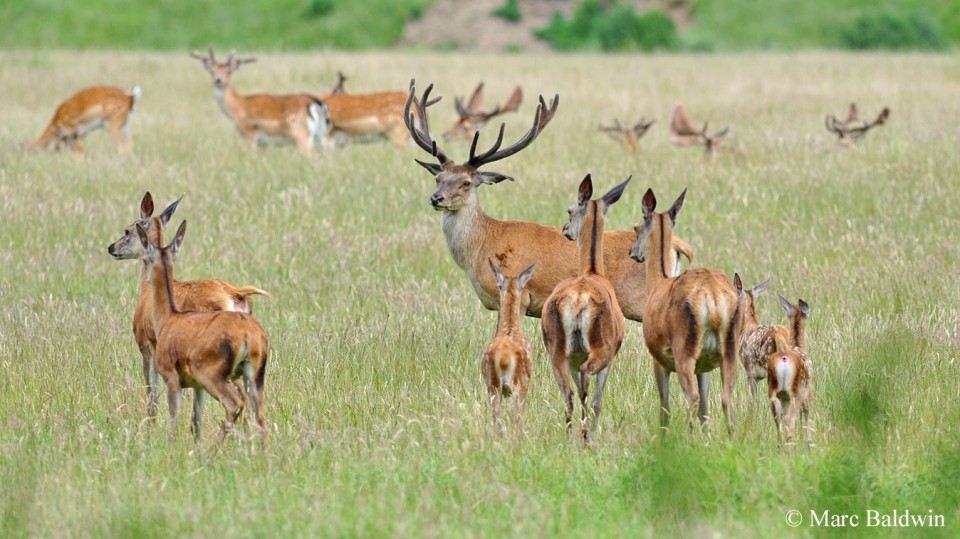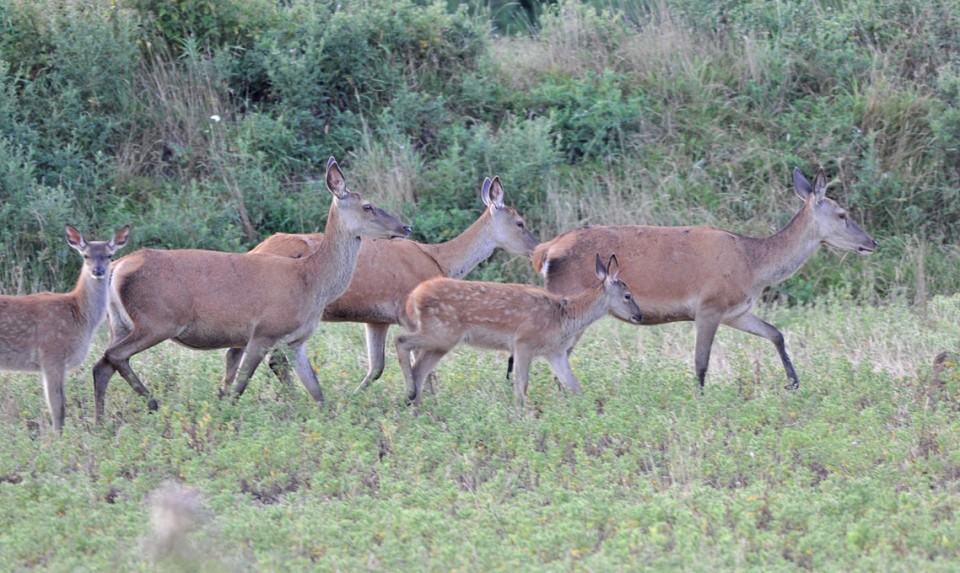Red Deer Territory & Home Range
In the strictest sense of the term, Red deer stag territoriality is seasonally ephemeral – that is to say that they establish a territory for a brief period during the breeding season. The territory is small, generally consisting of a small area to which females (most of whom will be coming into oestrus) come to feed, and can be mobile – if the hinds move, the stag goes with them (although there is a degree of ‘rounding-up’ while the hinds are using the stand).
There is a common misconception that the rut is about stags ‘gathering up’ as many females as possible during the rut and holding them in their territory until they’re in season and can be mated. In fact, it is the hinds that very much call the shots. The hinds are drawn to rich feeding grounds as autumn draws in and it is the males that congregate at this prime real estate to try and keep control of a section of it. If done well, this area will be that most favoured by the hinds and the stag will succeed in holding a sizeable group. Thus, the territory of a dominant rutting stag can move in accordance with the movements of the hinds – it is the hinds that the stag is defending, rather than the ground on which they feed.

The stag that succeeds in defending the females against interlopers has the opportunity to mate with them as they become receptive and, although he may permit other stags into the area, any attempt by them to approach the hinds is met with a challenge. The group of hinds in this situation is referred to as a ‘harem’ and this form of breeding strategy is called harem defence. In areas where resources are scarce and female distribution is both patchy and predictable, stags may shift from harem defence to more ‘inclusive’ territoriality, where they defend an area (that may cover several hectares) from other stags. Territoriality in this sense has only been demonstrated for Red stags in parts of Spain, although Juan Carranza and his team at the Universidad de Extremadura have shown, through the provision of supplemental food, that:
“territoriality should arise in other red deer populations if resources are scarce and patchily distributed during the rut so that the use of space by females produces places that are worth defending.”
The experimentally-induced territoriality documented by Carranza and his colleagues shows that stags are able to make quick decisions about which strategy to employ, based on a few days assessing the prevailing conditions.
On the hoof
Outside of the rutting season there is no evidence for territoriality in either sex, although tracking studies suggest that hinds show a greater site fidelity than stags, which tend to disperse further and be more nomadic. Overall, the area over which any animal will roam is directly dependent upon the availability of key resources – one such crucial resource is food. The more food around, the less you have to walk to find it and the smaller the area you need to cover to stay fed. Similarly, the better the quality of the food (in terms of high nutrient content), the less of it you typically need to consume to get your recommended daily allowances. Consequently, the overall home range of a deer varies not only according to the habitat in which they’re living, but also with the nutritional requirements of the animals; this can lead to variations in range size according to sex.
Hinds have high energetic demands during the winter because they’re carrying a developing foetus, and thus monopolise the high quality grazing, forcing stags to feed in relatively poorer areas. Consequently, the stags need to cover more ground to get sufficient food and need larger ranges than hinds. There is considerable geographic variation, but in the Scottish Highlands a stag may range over 800 ha (~ 2,000 acres) or more, while a hind requires roughly half of that. In their contribution to Mammals of the British Isles: Handbook, 4th Edition, Brian Staines, Jochen Langbein and Tim Burkitt give ranges of 200 to 400 ha (500 – 1000 acres) for hinds on Rum and 900 to 2400 ha (2200 – 6000 acres) for those in the East Highlands of Scotland.

Tracking studies by University of Exeter biologist Jochen Langbein found that hinds on Exmoor had home ranges between 275 and 711 ha, with the average being 430 ha (1062 acres); each deer’s range contained a single, smaller core area in which they spent the majority of their time. The stags on Exmoor, conversely, ranged over about 1100 ha (2700 acres) and their activity was concentrated in two core areas that were occupied on a seasonal basis.
In most habitats there is a pronounced seasonal difference in the range of Red deer; winter is generally spent on low ground and summer at higher altitudes, with males typically found lower than females during the winter and higher during the summer. Possible reasons for such sexual segregation are discussed in more detail in the Behaviour and Sociality section below, but it is interesting to note that such seasonal range use is not always apparent. Tracking studies by Brian Stains in Scotland and Jochen Langbein on Exmoor have demonstrated that hinds in Scottish plantations and on Exmoor don’t appear to have any seasonal differences in their range, while the stags in the same areas do.